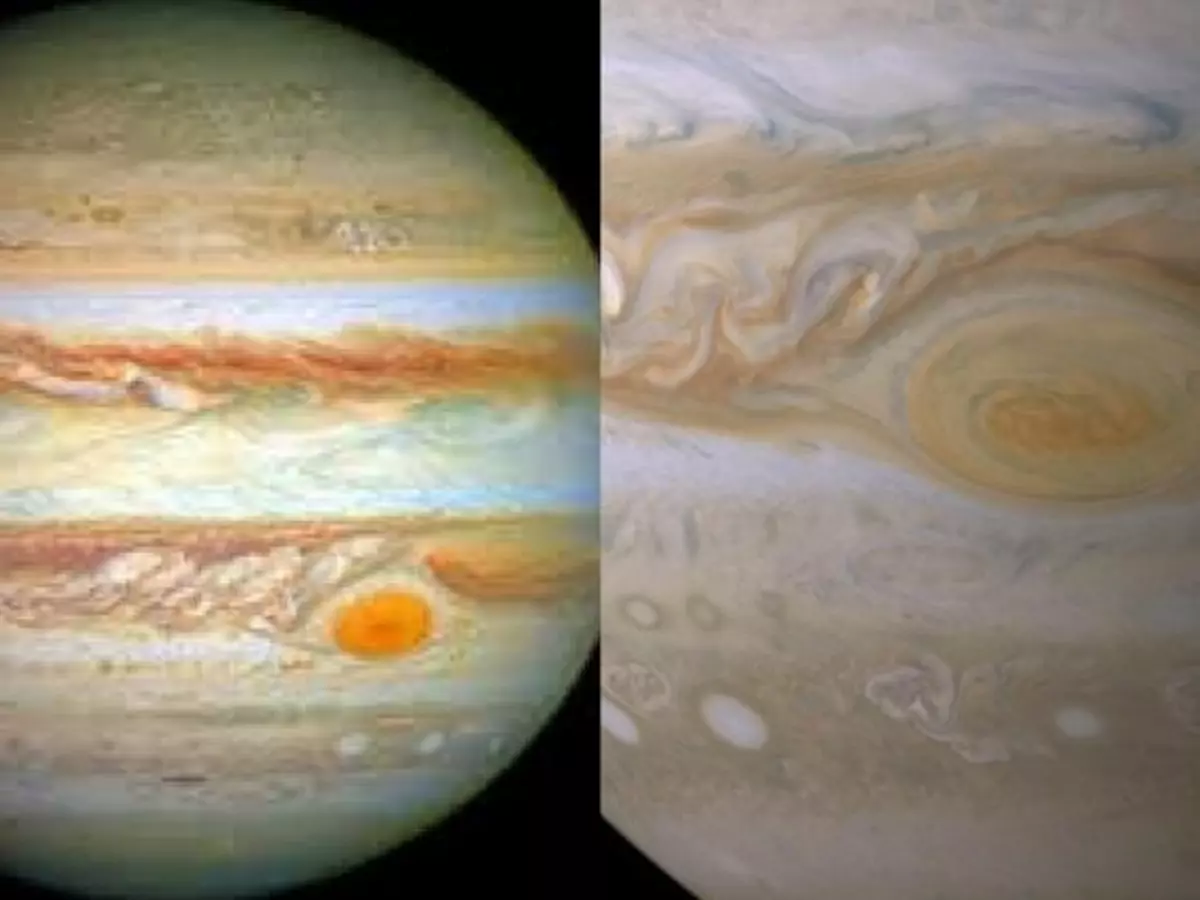NASA's New Study Reveals That Jupiter's Great Red Spot Is Shrinking In Width & Growing Taller
The Red Spot on Jupiter is said to be a giant storm that&rsquos been raging for hundreds of years. A newly released study published in the peer-reviewed Astronomical Journal on March 13 2018 suggests that the gigantic storm has increased in area at least once along the way. According to the study the storm has been decreasing in length overall since 1878 and is big enough to accommodate just over one Earth at this point.

For the uninitiated, the Red Spot on Jupiter is said to be a giant storm that¡¯s been raging for hundreds of years.

NASA
NASA¡¯s Juno Mission, which had sent a spacecraft to orbit around Jupiter, has flown over the planet¡¯s famous Red Spot and has sent back some mind-boggling information.
In a newly released study, published in the peer-reviewed Astronomical Journal on March 13, 2018, suggests that the gigantic storm has increased in area at least once along the way, and it¡¯s growing taller as it gets smaller.
According to the study, the storm has been decreasing in length overall since 1878 and is big enough to accommodate just over one Earth at this point.
¡°Storms are dynamic, and that¡¯s what we see with the Great Red Spot. It¡¯s constantly changing in size and shape, and its winds shift, as well,¡±Amy Simon, an expert in planetary atmospheres at NASA¡¯s Goddard Space Flight Center in Greenbelt said in a press release.
Observations of Jupiter date back centuries, but the first confirmed sighting of the Great Red Spot was in 1831. Since then, observers have been able to measure the size and drift of the Great Red Spot by fitting their telescopes with an eyepiece.
For the latest study, Simon and her team of researchers combined these records to study changes in the storm¡¯s size, colour, shape, drift rate, and wind-speed, and found that the Great Red Spot is now only about a third the size of its 1878 width.
The press release states that The Great Red Spot¡¯s colour has been deepening, too, becoming intensely orange since 2014.
However, researchers aren¡¯t sure why that¡¯s happening, but it¡¯s possible that the chemicals which colour the storm are being carried higher into the atmosphere as the spot stretches up.

NASA
¡°If the trends we see in the Great Red Spot continue, the next five to 10 years could be very interesting from a dynamical point of view,¡± said co-author Rick Cosentino of NASA¡¯s Goddard Space Flight Center.
